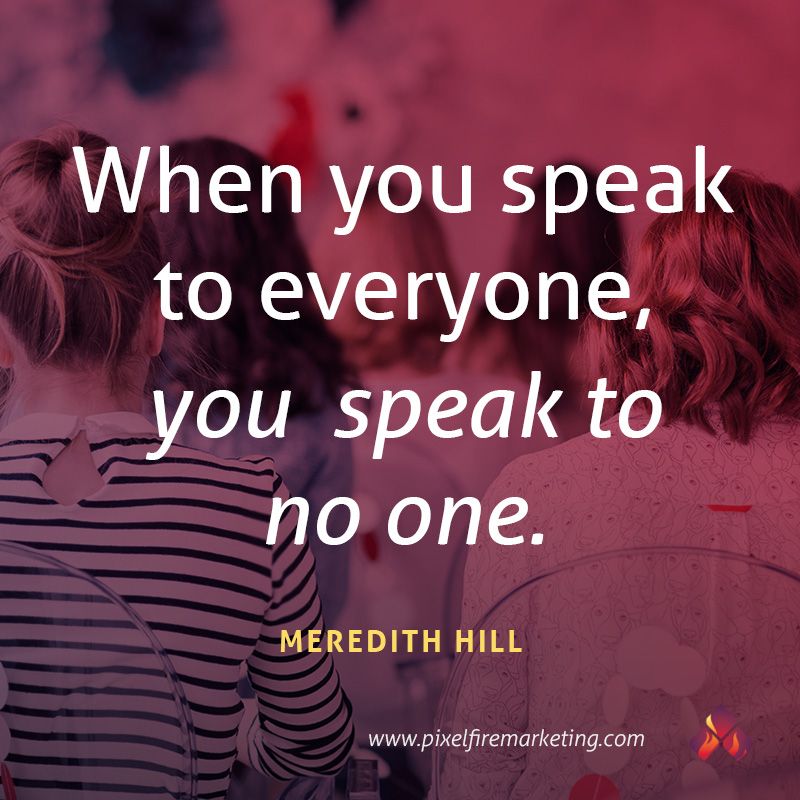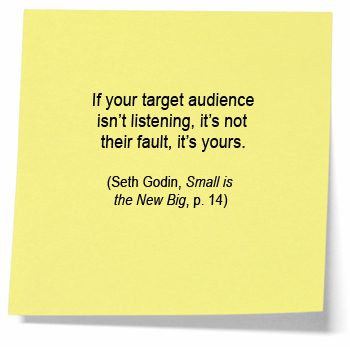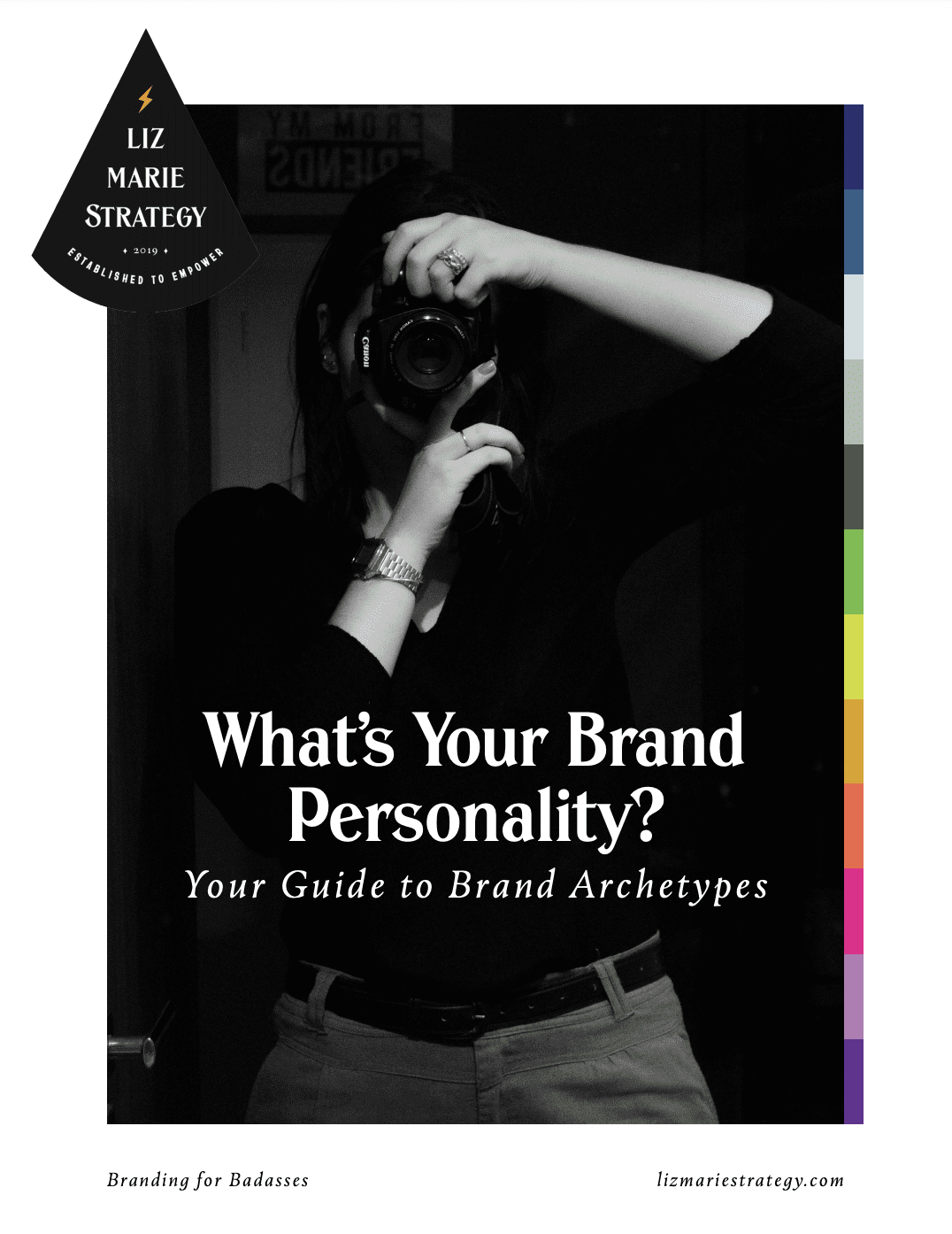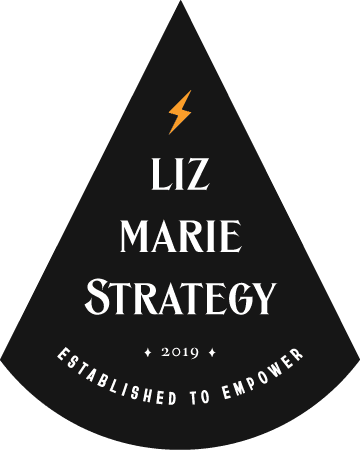Don’t take this the wrong way, but YOU ARE NOT FOR EVERYBODY!
If you have a business or a business idea but your audience is too broad: you don’t know who they are, you don’t know very much about them, or you think that you’re selling to everybody… then this blog is for you.
Today, we’re going over why it’s so important to niche down (especially for a small business), three techniques for identifying your niche, and some free ways you can learn even more about your audience.
Why Niching Matters
Here’s the thing, I can’t tell you how many times I’ve talked to a business owner about their audience and who they serve, and they respond with “everybody who needs my product or service.” But that’s not true. It’s wrong, and it’s not going to work.
Unless you’re an enormous national or multinational company, you do not have the resources to serve everybody. Period. As a small business, you have to start with something specific and targeted. This is because you need to resonate with people emotionally to get them to buy your product or service. You need to capture their psychology or their needs. And it takes a lot of marketing to do that with all different types of people.
Being specific is very, very powerful. If you are the best, perfect fit for a particular targeted problem, you will go worlds farther with that audience than if you just kinda resonate with a lot of different people.
As the internet has blossomed and changed our lives, things have become far more niche. There’s an audience for so many different interests and a style or a point of view that resonates differently with everyone. Since we have so much choice and so many options, we expect even the simplest of purchases to align with our values and personality. People make much more informed decisions about who they work with, what they buy, and how they shop. So, there is an opportunity for business owners to resonate even more deeply, even in purchasing decisions that used to be considered a commodity.
If you are trying to build a small business or you’re just getting started, I highly, highly, highly recommend being really clear about who your niche is: niching down to a pretty small – but still profitable – market and getting as clear as you can about who that audience is.
*IMPORTANT NOTE: As we dig into this, I will assume that you know what your market is. If you haven’t even come up with a business idea at all, this is not the blog for you (maybe I’ll address this in the future, so stay tuned). This blog is for someone who already has a product, service, or idea that they want to offer, but they’re just not clear enough on who is the best fit for it.
Let’s get into it!
You want to ask yourself three key questions to figure out the right audience for you.
Question #1: What do you help people do?
A lot of people talk about this as “problem-solution,” and this could be literally problem-solution. For example, I have a friend who has an extermination company—specifically, rat exclusion services. You have rats; he gets rid of them (thank God. Rats are my biggest fear). Or, if you want to lose weight and hire a personal trainer, they help you lose weight. Problem-solution. Super straightforward.
That doesn’t apply to every brand, though. Sometimes, trying to think about your brand as a problem-solution can make it more challenging because what if you’re not solving a problem or not a straightforward one. What if you’re just offering something someone wants, not something they need? That’s why I like to reframe it as what you help people do. That question starts to key in on the psychology and the emotional wants and needs of your consumer.
Let’s say you have a clothing company. You literally help people get dressed. You help people put clothes on because our society says you can’t walk around naked. But on a deeper level, maybe you help them feel more confident or beautiful. Maybe you help them get the job that they want or catch the eye of their next date. Whatever you offer, any product or service, literally ANY products or service, helps someone do something that they’re seeking to do. There is some want or need that you are delivering on. If you don’t, no one will buy it, and your business won’t be viable). If you have a viable business, there is a want or a need there that you are serving. You need to start by being really clear on what that want or need is.
Again, you want to be as specific as possible. Let’s look deeper into the personal trainer example. It’s one thing to say you help people lose weight. It’s another thing to say you help people lose weight in a way that they can sustain for the rest of their lives, unlike a yo-yo diet. That is super specific, and it is a point of differentiation from other ways that people could help someone lose weight.
This first question is really more about your value proposition and what you’re helping people do, but that directly interconnects with your audience.
Question #2: Who do you help?
You may be thinking, “Liz, that’s why I’m reading this. I don’t know who I help.” Hold up. We’re going to talk about it. This is the part where most people say everybody and they are wrong. You do not help everybody (I’m not going to stop saying this, btw).
First of all, you only help people who have that want or need, right? If someone doesn’t have that problem or want, they’re not going to be interested in what you have to offer. That’s the first way we narrow down this funnel from everybody to your target audience.
But then we need to get a little bit more imaginative. Think of this as a combo of using your imagination, what you know about people and research. Yes, actual research; what you have learned or will learn about your audience from your business and the research that I will guide you through.
Start by thinking about:
Who is this want or need the strongest for? Who is this the best fit for? You might land on a few different people, and you can dig into each of those.
What are those people like? What are their lives like?
As you’re answering those questions, you want to look at their demographics. Those are kind of the data points around their lives like age, gender, location, income level, some of those things that we often think of that we need to dissect our audience by. But those aren’t nearly as important as their psychographics.
Psychographics are their psychological characteristics. Their values, their beliefs about the world. What is important to them? What do they want? What are they’re seeking in a big picture/life sense? These shift by culture, identity, age, but they’re shared characteristics that a lot of people have that help us get into the deeper psychology of who they are.
You also want to think about lifestyle factors. On the demographic side, you might have a working mom in her forties, which is just a data point. But when you think about the lifestyle of what a working mom might be, you get a deeper picture. Maybe she’s really busy; she’s running around, her kids are playing sports or whatever. You start to use your imagination to think of these people as real people with rich, vivid lives because they are real people with rich, vivid lives.
You want to start to identify some of the types of people who have this problem, want, or need; that have these shared characteristics that you can serve.
Let’s look at a couple of examples:
I have a friend who is a copywriter who works explicitly with introverts. Because introverts often have challenges putting themselves out there or talking about themselves, marketing themselves can be very uncomfortable. That is her niche. It keys in on the psychographics of a certain group of people: business owners who are trying to build a business and market themselves who also identify as introverts.
I worked for a branding agency that focused on financial services businesses, especially ones trying to grow. They might be a small business trying to level up into a major player in the industry. So, they’d key in on a market that had a specific business need and a specific goal in mind. That’s a good, straightforward example of how to slice and dice it in contrast to the psychographic introvert example.
Question #3: What point of view do you have?
What do you see in the market that you want to remedy? What gets you fired up? What is your hot take on what you do? Is someone underserved in this industry? Is there something you want to change?
This may take a little bit of time to get clarity on, and it may come as you’re operating your business. But if you’re really passionate about a particular issue or angle, that’s a good thing to lean into because you’re probably not the only one seeing that gap. And you can really align yourselves with those people who are underserved or having that problem, and you can become the solution! This is where identifying your niche often circles back to creating your offer/product/service. If you see this angle that you can take, it usually bleeds right into how you design the solution itself.
Looking again at my introverted copywriter friend: Her unique angle is that she doesn’t believe marketing has to be manipulative, and she wants to fight back against that manipulation (something I wholeheartedly believe in). So, she specifically uses non-manipulative marketing tactics with her introverted copywriting clients.
Another example we’ve started to see recently is how brands shouldn’t build shapewear, makeup, bandages, and other body products solely around white people and white skin colors. While this is common fucking sense, the business didn’t work that way for, well, ever. Now, there’s a ton of rad, disruptive brands offering different colors of pantyhose, bras, makeup, etc., aligning themselves with this gap and with everyone that’s like, “fuck yeah! I’ve been saying that for years! Of course, I’m going to buy your product because you’re filling the need!” That’s how they found their audience.
As you’re answering these questions:
- Look at your current customers or clients and for patterns or consistencies in their behaviors, the circumstances through which they came to you, their personalities, etc. What is some common ground between the people that are naturally already gravitating to you?
- Look at who you like serving or working with the most. For example, my VA recently told me that she wants to niche down into working with creatives. Part of that came from her and me working together and it being a really rewarding relationship. With that, she’s found that her skillset compliments creative entrepreneurs. So, your actual, real-life clients can be a great source of inspiration.

How to Research Your Audience
Now, let’s say you have an existing audience, but you feel like you don’t know that much about them. So how do you learn more about them? Well, you need to do some research.
Method #1: Talk to your existing audience
It sounds really simple, but I can’t tell you how many clients are afraid to talk to their customers. They feel like having those conversations and getting feedback or input is a burden on their customers. But I promise it’s not at all. I do these on behalf of my clients all the time, and people are always so happy and willing to provide feedback. It makes them feel even more connected to the brand.
So the first step is just to talk to them. Interview them. Say, “Hey, can I have 10 minutes of your time and ask you a few questions? I want to learn more about you.” You can always give an incentive if you feel like you want to, but usually, you don’t even need to. Talking to them makes that person, your customer or client, feel valued. Like you actually care about them. And it really strengthens that relationship.
Method #2: Listen to what your audience is already saying
Another simple one is listening to your audience. Pay attention to their emails, social media comments, to any of the places where they’re communicating with you. Your audience is already telling you a lot about them; you just have to pay attention.
Go back through your emails, social media, and interactions if you need to because your audience is likely already telling you the questions and challenges they have. The info is right there for the taking.
Method #3: Conduct a survey
Surveys are so valuable. They’re a simple, free way to learn tons about your audience. I do them on basically every project; it’s one of the most valuable pieces of strategy. It will change your whole business, and you will learn so much. Like maybe the problems you focused on aren’t the real problems. Maybe there’s an opportunity in there that people are just begging for, and you didn’t know cause you didn’t think to ask.
Google Forms is a great free tool for this. I usually keep mine around ten questions with a mix of multiple-choice, yes or no, and short answers. In addition, you can download my customer research guide that focuses on how to create surveys and what questions to ask. Remember, any feedback is valuable.
You can also do this if you haven’t started your brand yet. When I first created my company, I asked my colleagues, friends, and family for feedback about their perceptions of me. This helped me define my brand personality and my brand message as I was building it because I didn’t have an audience to work with. I also have a downloadable guide on that, featuring personal brand research questions you can ask people in your network when you’re first getting started.
Method #4: Stalk them on social media
I say stalk lightly because I really just mean look at their profiles and see what they’re into. You have followers and people in your network you already know that probably fit your audience profile. So just look at them and learn about them and their lives. This is especially helpful If you’re not comfortable asking questions yet. A little simple social media stalk can be a good way to get a little bit more detail.
I mentioned this earlier, but you do need to make sure that there is a real, profitable market for your niche. You don’t want to get so specific that there’s no demand because that’s not gonna work out for you.

Test Your Niche
Once you put this into practice in your brand, start messaging to this audience and putting it out there that that’s who you serve, you want to see if that actually works and resonates with people. This may take a little time, and it will likely evolve. Lots of businesses tweak their niche and shift as they learn, grow, as different people’s needs come, and as other players come into the market. It’s all an evolution. So you’re just going to keep testing and validating and seeing what works.
Even for big companies with tons of funding, it takes a long time to find what they call “product-market fit,” which is when the connection between what you’re offering and what your audience needs is perfectly aligned. Sometimes it can be one of the biggest challenges you face in your businesses. Maybe you offer something fucking awesome, but you can’t quite reach the person that needs it the most or is willing to pay for it. It may take a little tweaking to get there, but it starts with asking yourself these questions and doing all that research behind the scenes to learn more about your audience.
Hopefully, you have learned a few techniques that can help you key in on your perfect niche for your brand to stop trying to sell to everybody, reach the right people, and be successful in building your business.
Download my customer research guide or my personal brand research guide for a little help along the way in doing your research into your audience.
Until next time, stay badass!

